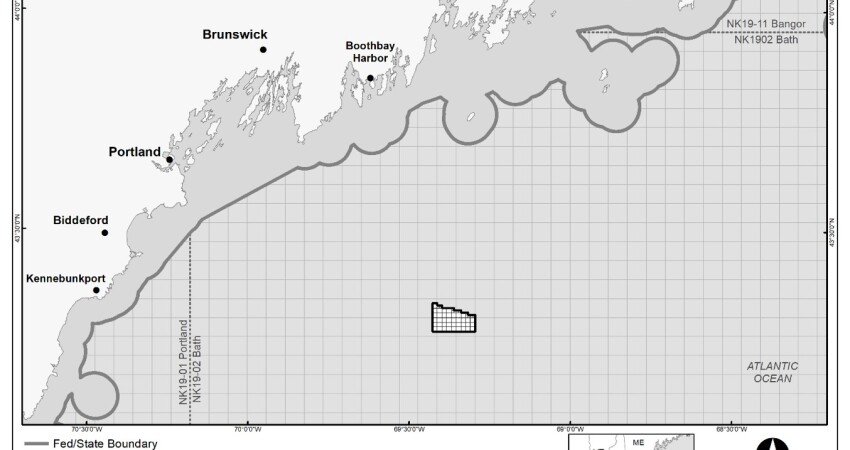The Bureau of Ocean Energy Management said Monday it has executed the first lease for floating wind energy turbines in U.S. waters where the State of Maine could deploy up to 12 generators 28 nautical miles offshore.
The deepwater Gulf of Maine could be an early trial for the U.S. industry, which needs the technology to exploit BOEM’s planned commercial off the West Coast. Maine’s project would have a maximum nameplate power rating up to 144 megawatts, according to BOEM.
Like other Northeast state governments, Maine Gov. Janet Mills’ administration has promoted offshore wind development as a solution to the region’s energy needs.
“This lease between the State and BOEM to support the nation's first research array devoted to floating offshore wind technology is the result of extensive engagement with stakeholders and communities across our state to establish Maine as a leader in responsible offshore wind, in balance with our state's marine economy and environment," Mills said in a joint statement with BOEM.
Ongoing development of fixed-foundation turbine arrays on the outer continental shelf off southern New England is already generating intense conflict with the region’s fishing and tourism industries.
In the Gulf of Maine, “the research array will allow the State, the fishing community, wildlife experts, the offshore wind industry, and others to conduct in-depth studies and thoroughly evaluate floating offshore wind as a renewable energy source in the region,” according to BOEM.
Maine officials applied in October 2021 for the research lease, and BOEM in March 2023 issued a “determination of no competitive interest” from commercial developers.
After working with the state Governor’s Energy Office to develop the lease for research, BOEM offered the lease May 24 after completing a Final Environmental Assessment with “no significant impacts.”
The State of Maine “or its designated operator will propose and conduct research regarding environmental and engineering aspects of the proposed project. This information will be made public and used to inform future planning, permitting, and construction of commercial-scale floating offshore wind projects in the region,” according to BOEM.
Construction work on the array is still several years in the future. Maine first must submit a research activities plan to BOEM, subject to a separate
Construction activity on the research array is not likely to occur for several years. The lessee is first required to submit a Research Activities Plan for environmental analysis under the National Environmental Policy Act.







